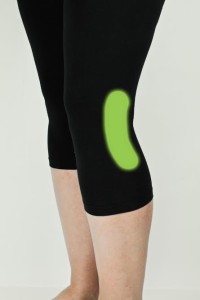Posted by slomotionshoes | 1 February, 2015
Iliotibia Band Syndrome (ITB Syndrome)
ITB syndrome is a common cause of pain to the outside knee often seen in runners. This painful overuse injury is caused when the Iliotibial band which runs from the hip to the shin through the latter side of the leg loses flexibility and becomes tight or inflamed after constant use.

There are a few different factors which put runners at risk of ITB syndrome. Foot overpronation is a major cause of ITB syndrome as it causes the kinetic chain which includes the ankle, knee, and hip to become misaligned. The excessive motion of the foot’s arch which is the foundation of the body’s entire bone structure does not only put runners at risk of ITB syndrome but also other overuse injuries such as plantar fasciitis and achilles tendonitis. Consistently working on body flexibility with Yoga or pre-workout dynamic stretching, as well as constant water intake, reduces the risk of overuse injuries by returning elasticity to ligaments, tendons, and muscle.
Another factor that contributes to ITB syndrome is the higher than normal angulation of the femur. Higher angulation leads to the Iliotibial band being stretched more than normal with every step during a run. After a long work out the Iliotibial band may become inflamed after being put through constant strain.
Modification of running style may have some benefit for runner’s whos femur angulation is higher than normal. A recent study summarized in Lower Extremity Review (July ’13/Volume 5/Number 7) suggests that runners who increased the width of their running stance tended to decrease the strain of the Iliotibial band on the outside portion of the knee which assisted in recovery
The best way to recover from many overuse injuries is to immobilize the problem area as much as possible in order to let it rest and heal naturally. In the case of ITB syndrome the Iliotibial band must be kept from being strained. This can be done in the following ways:
- Realigning the kinetic chain with shoe and orthotic
- Make sure your current shoes are not excessively worn out on their lateral side
- Increase width of running stance
- Run on level surfaces as much as possible
- Perform proper warm up before any physical activity
- Change the direction of your run (Ex. Alternate between running clockwise and counter-clockwise on a track)
- Strengthening of hip muscle

